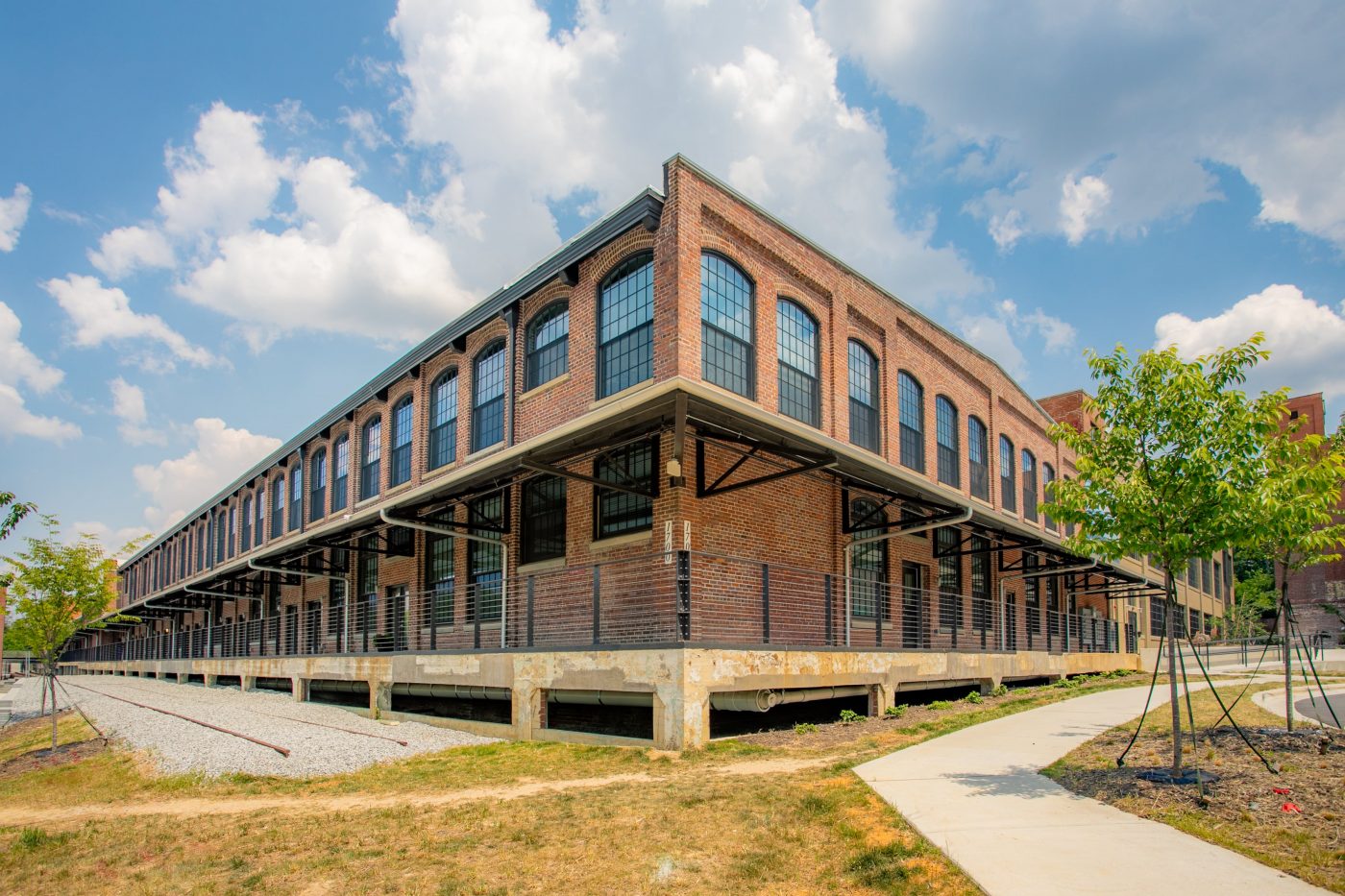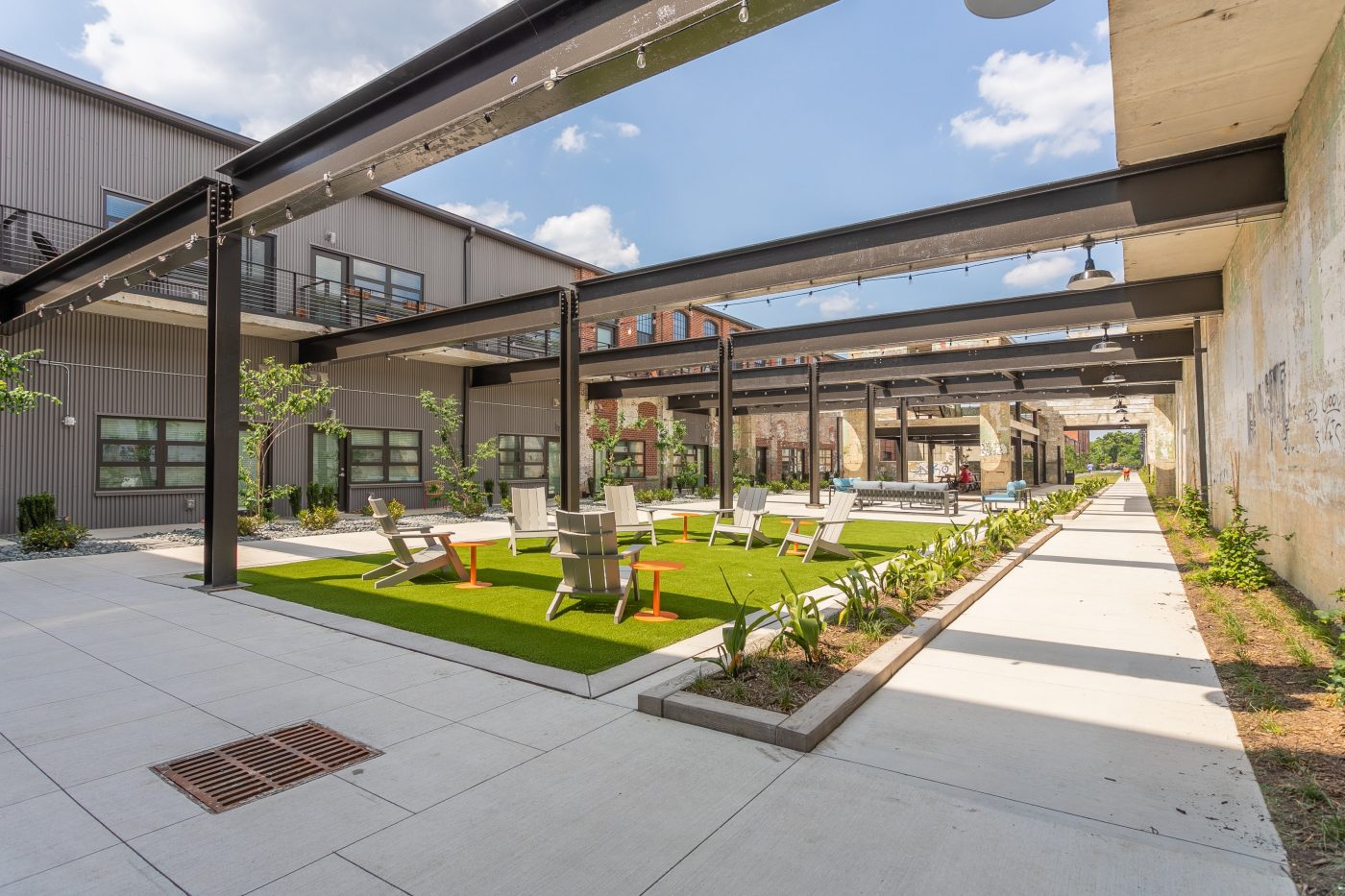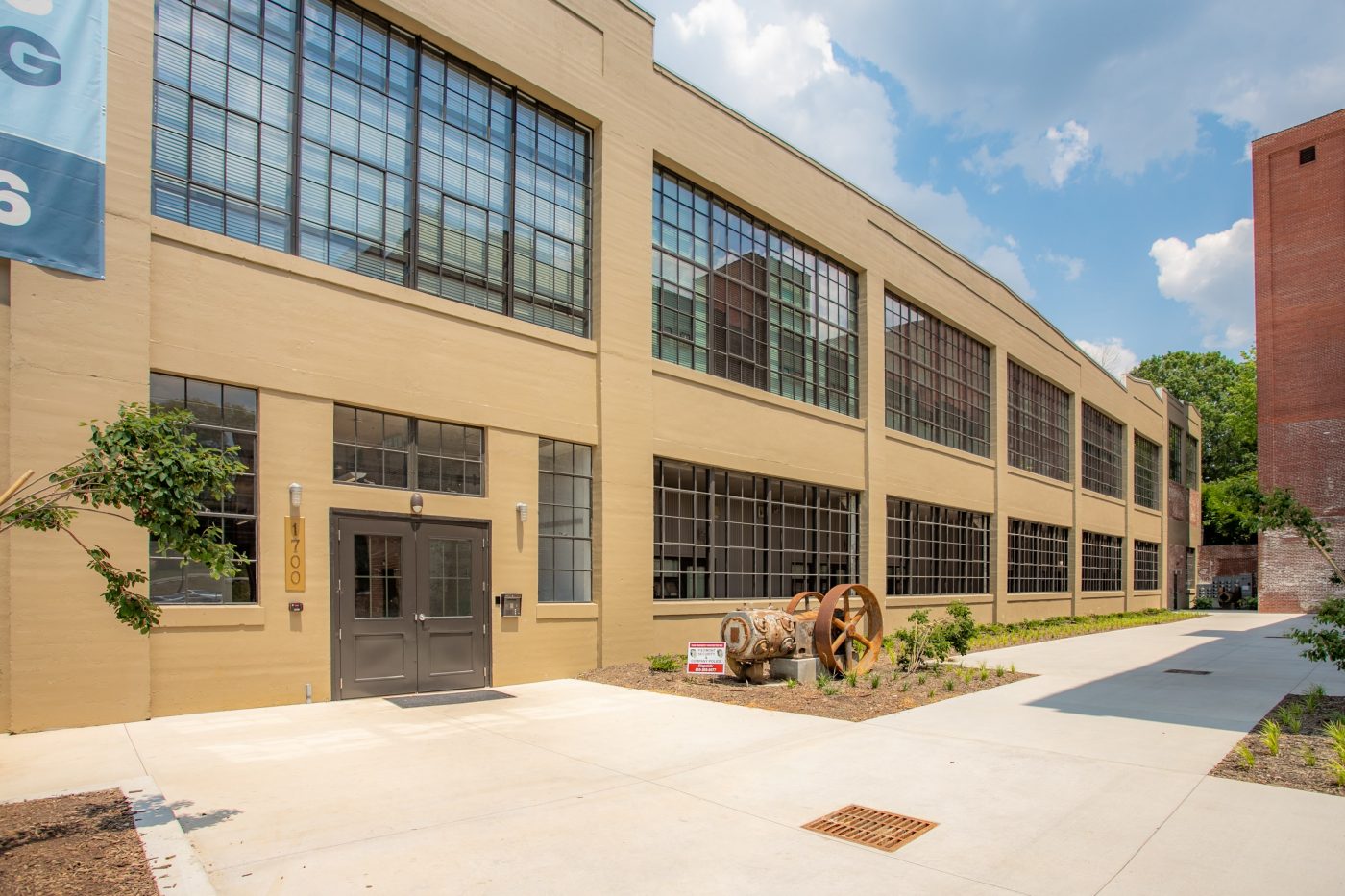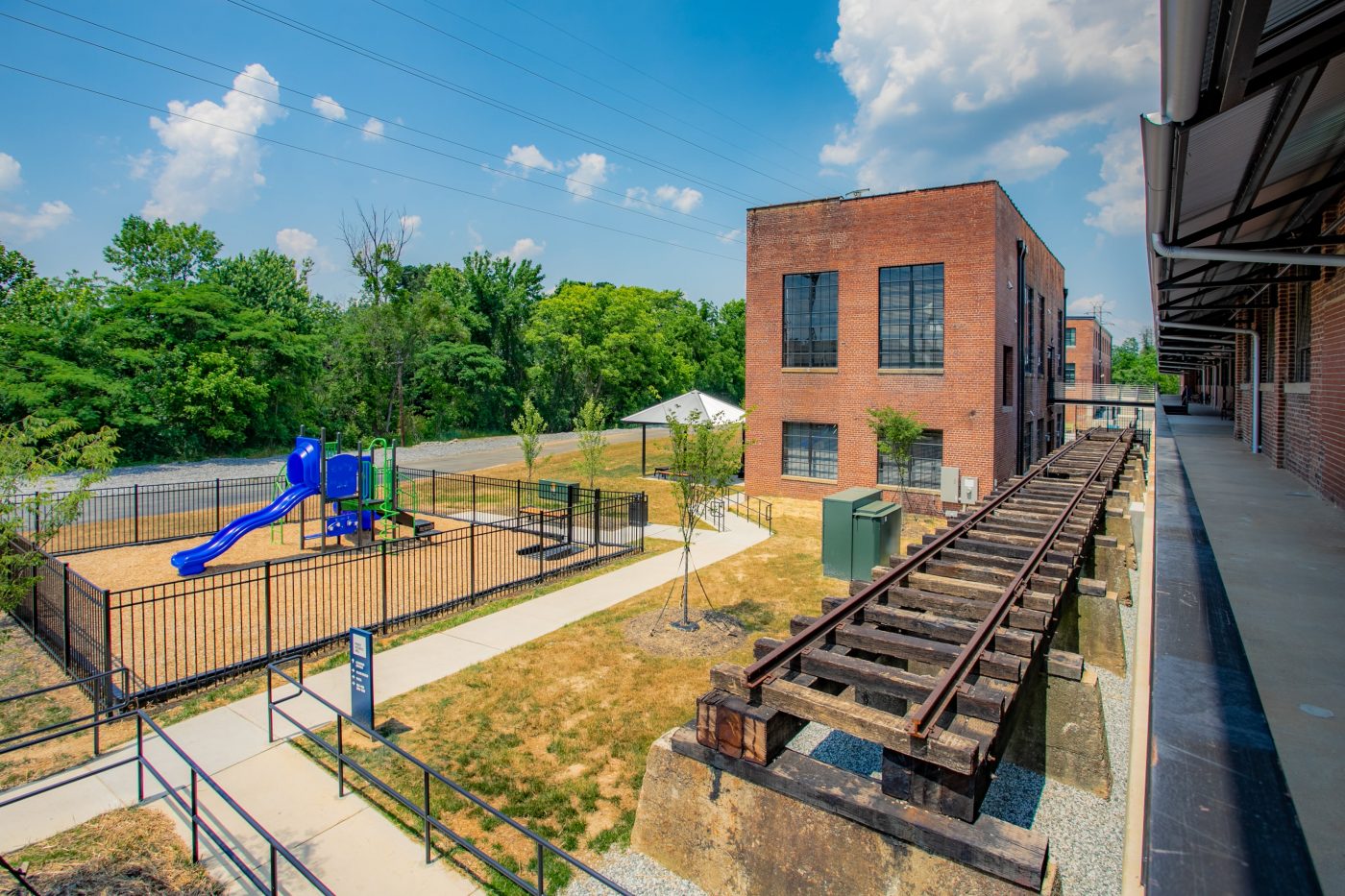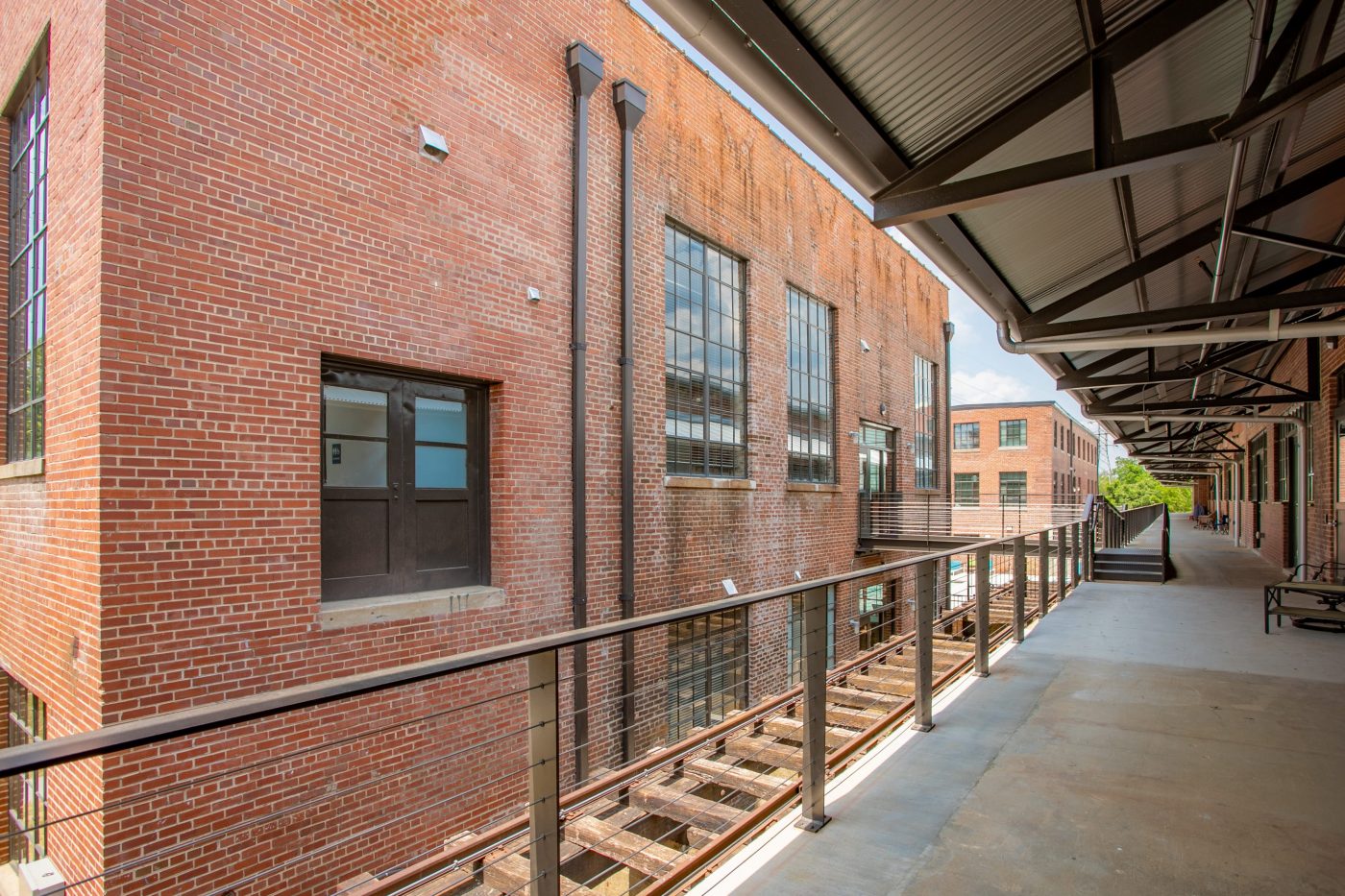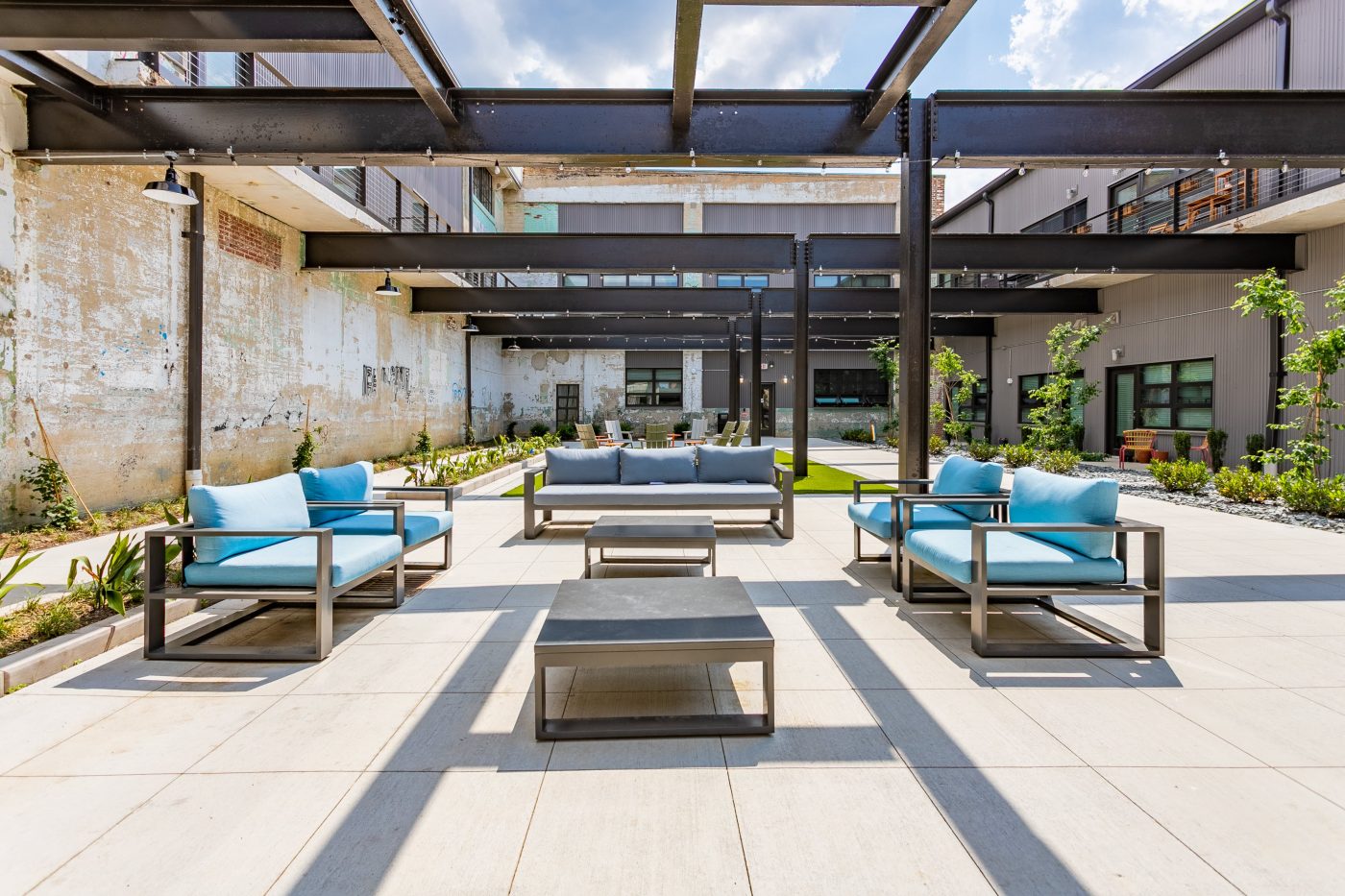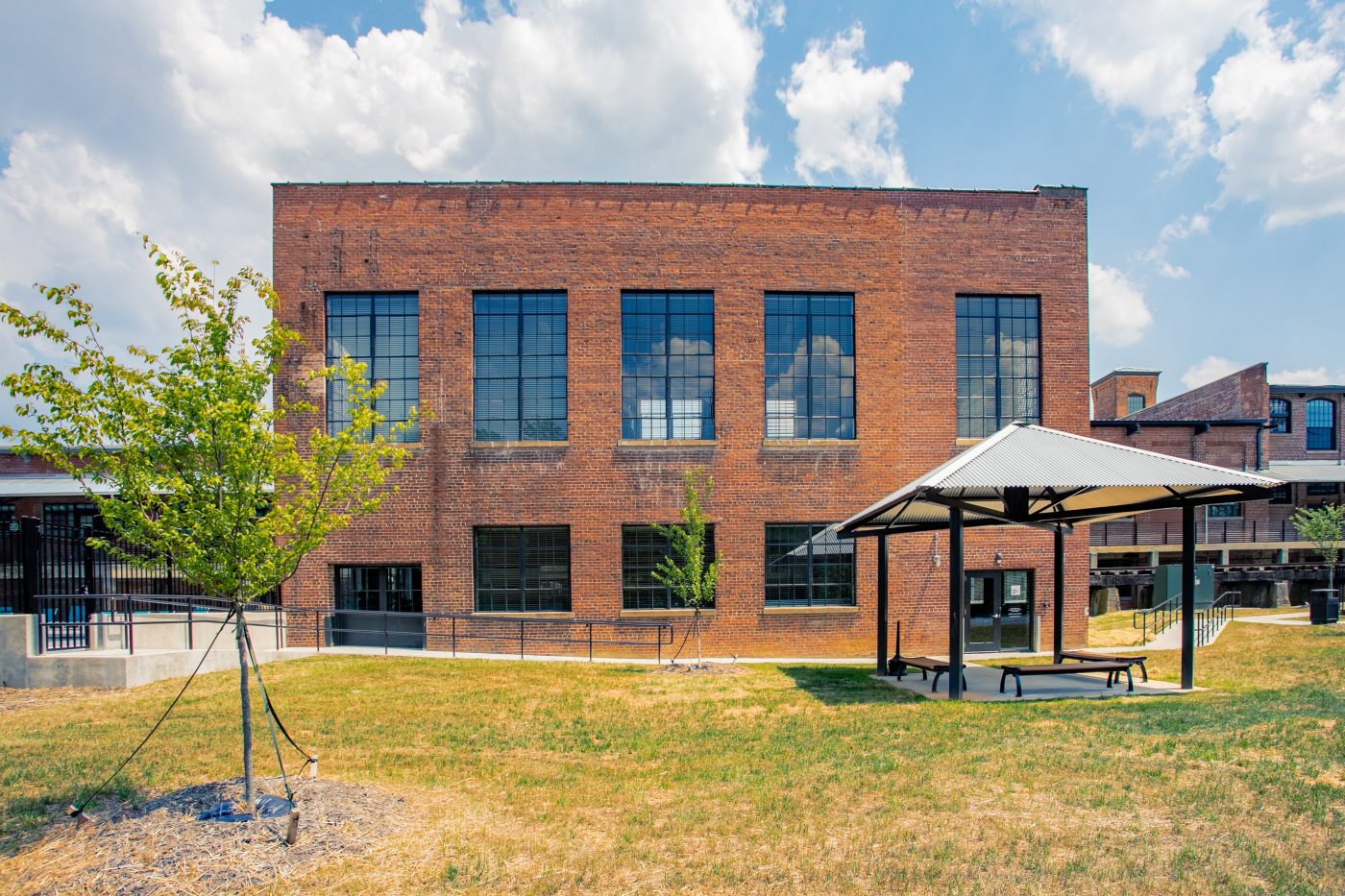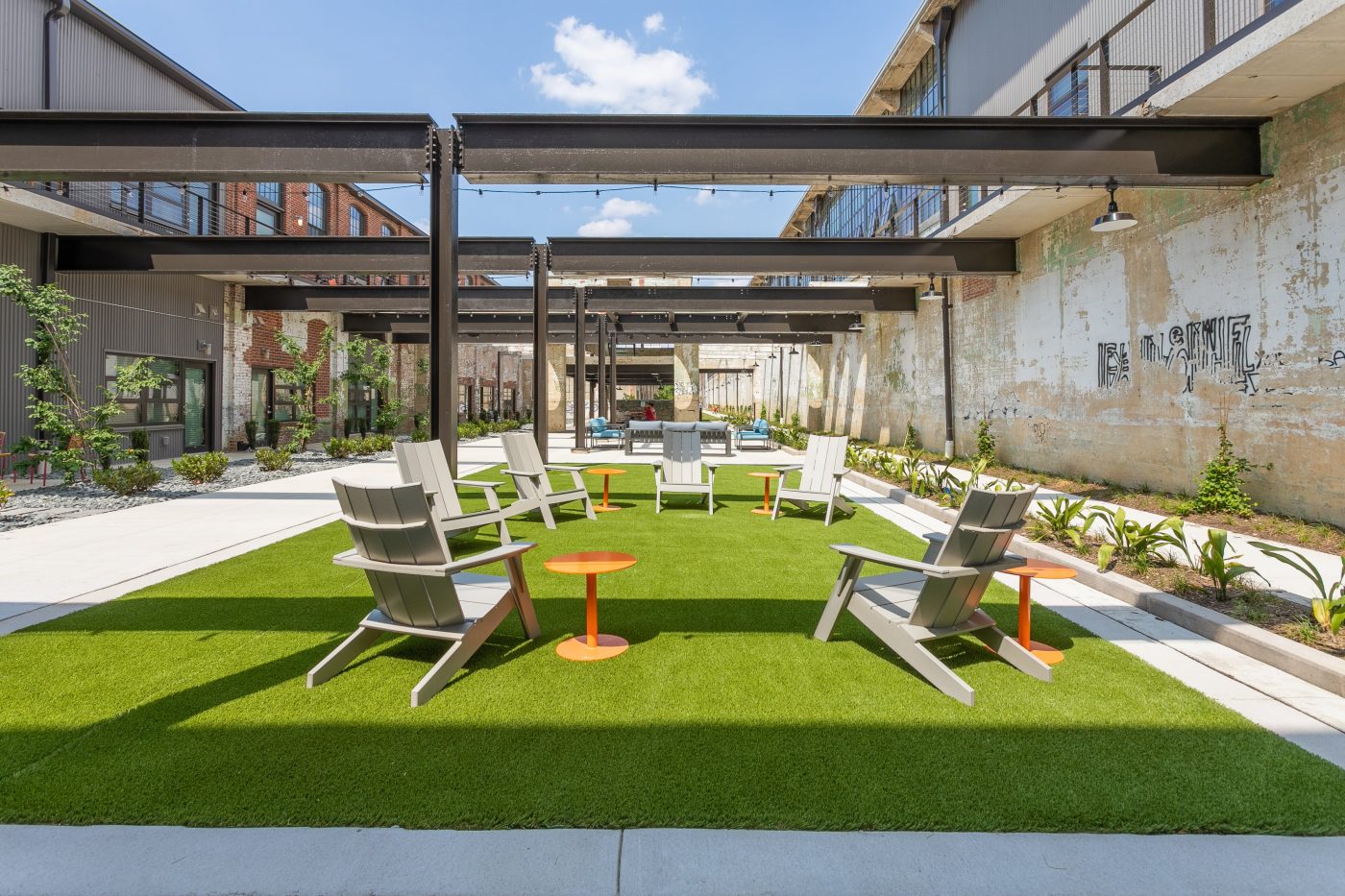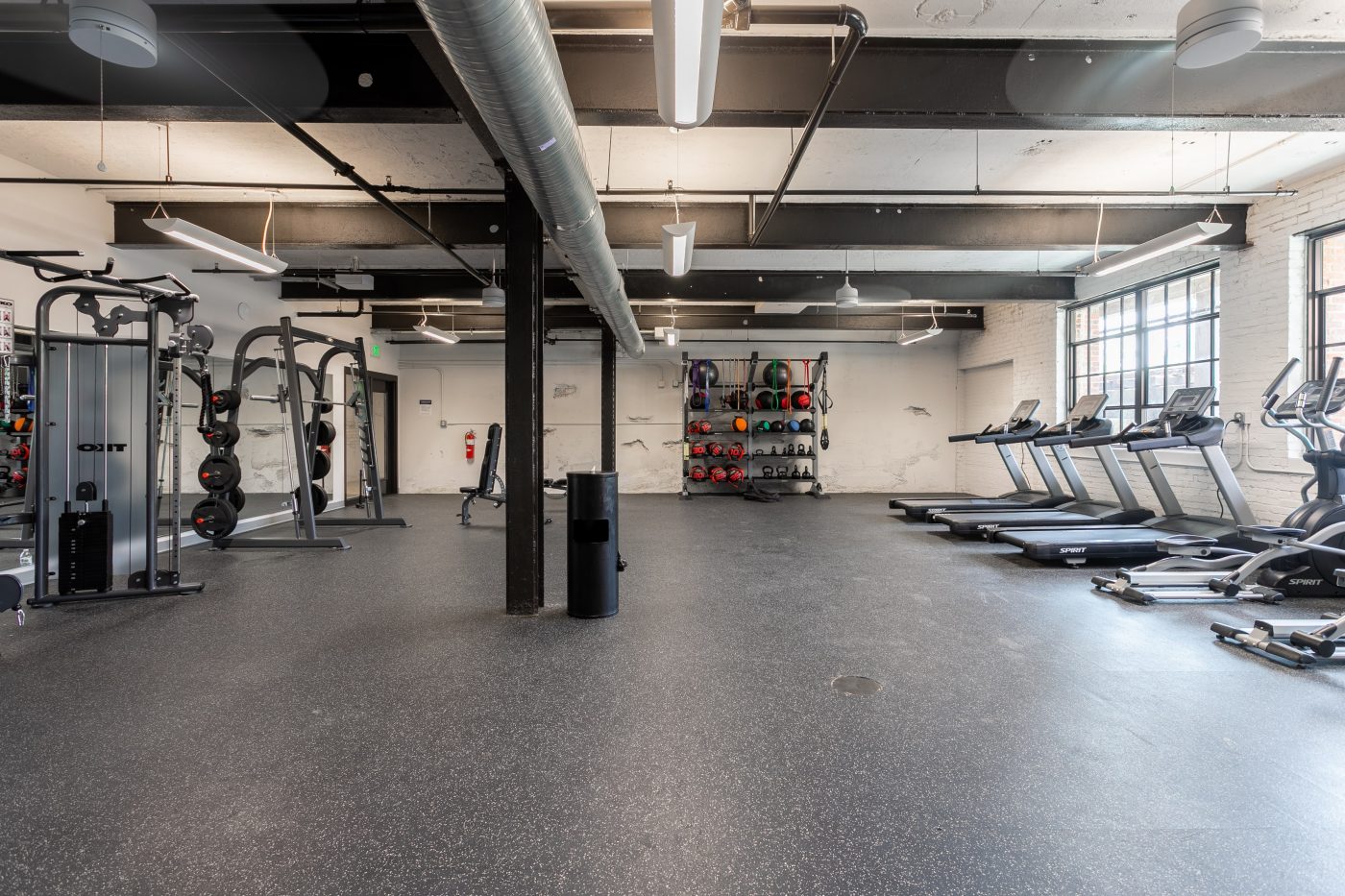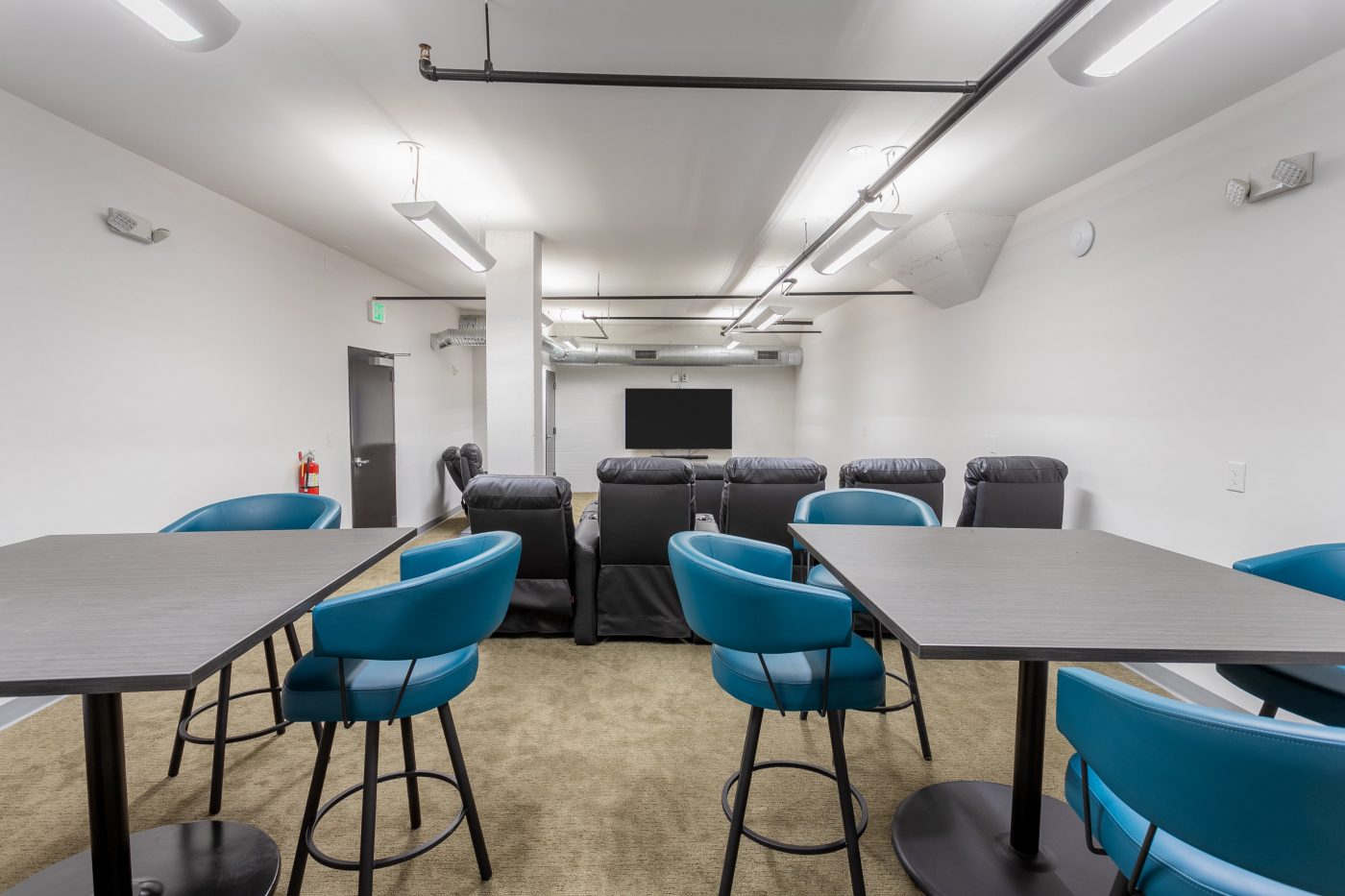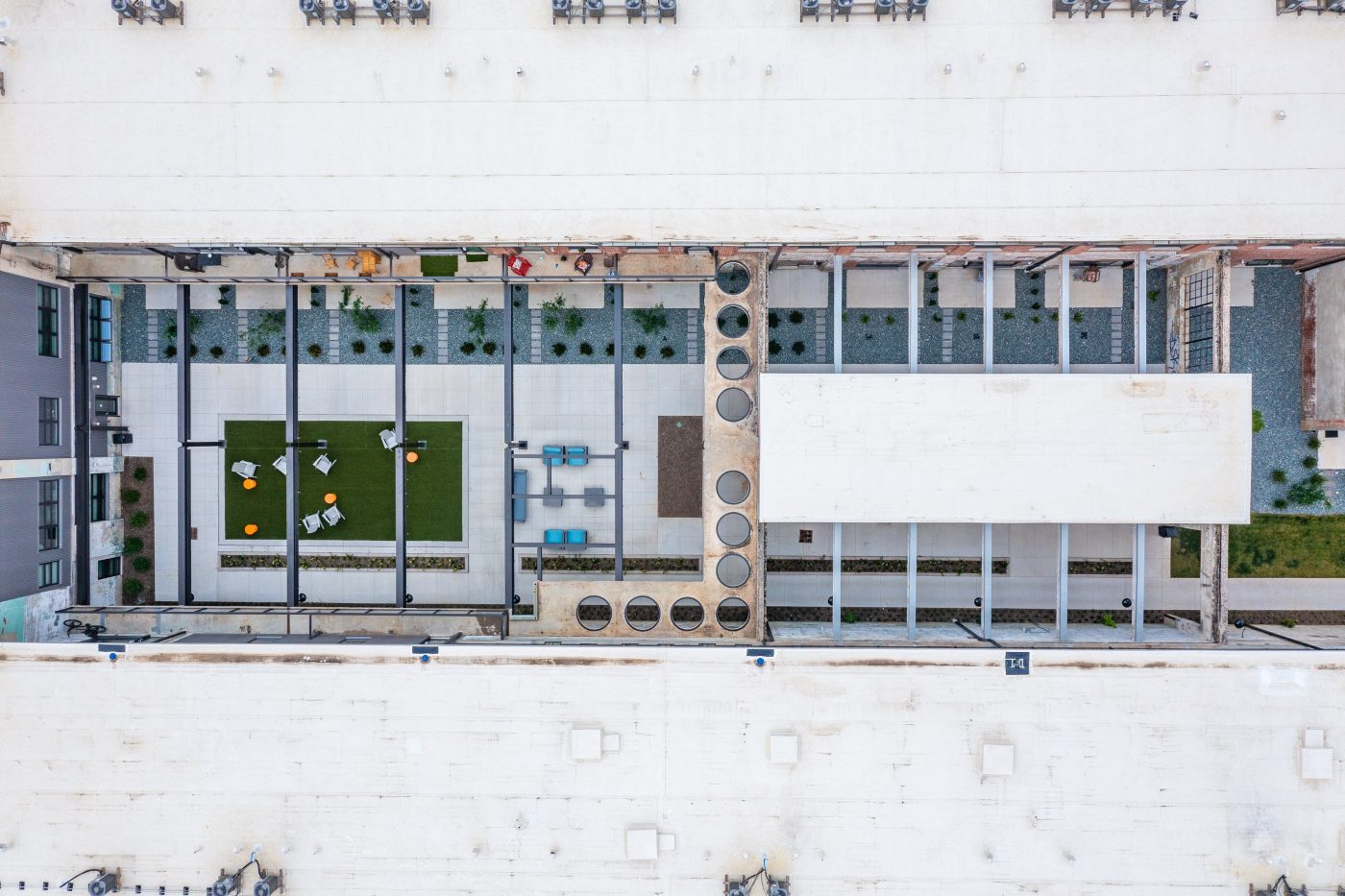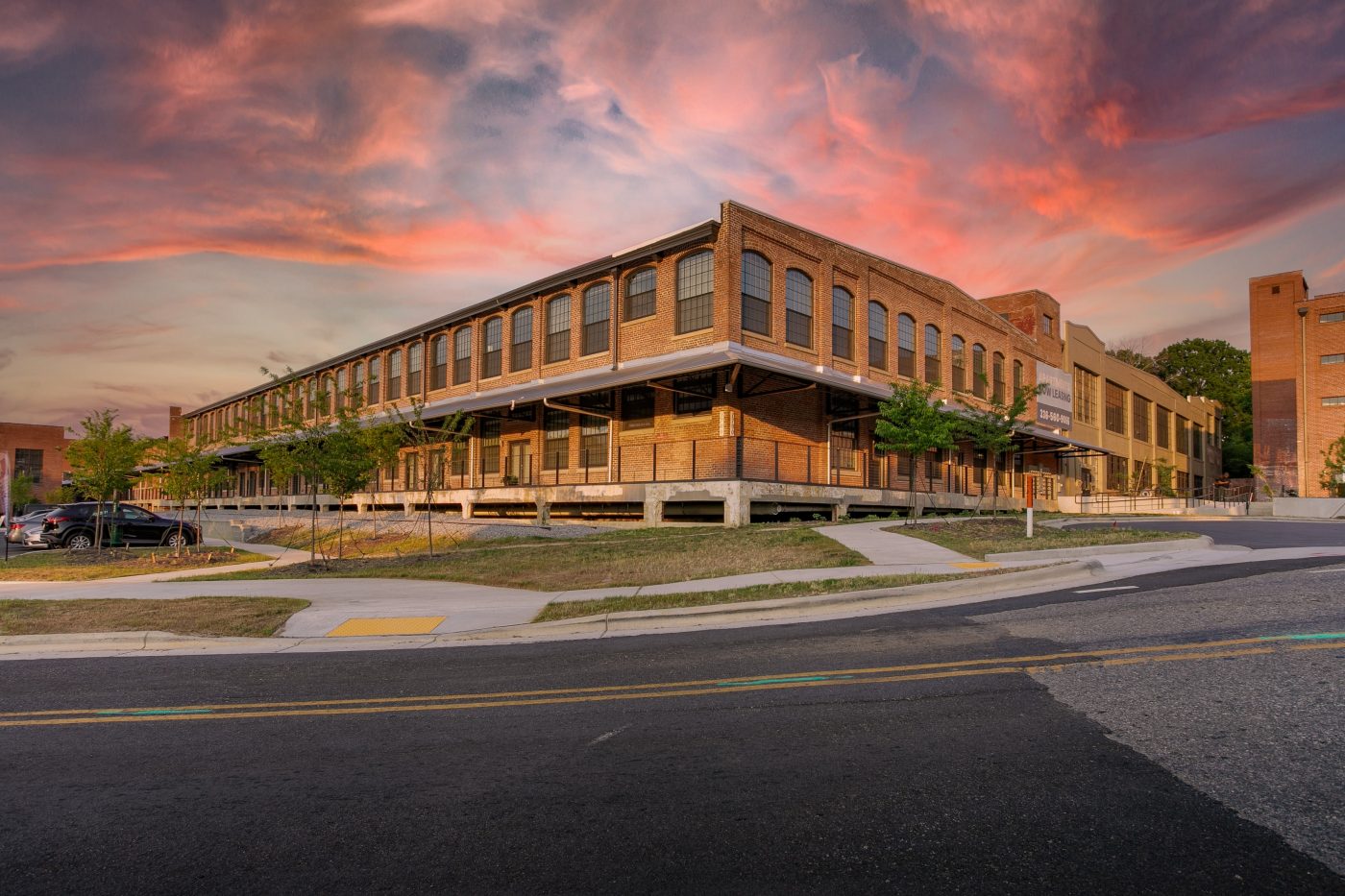-
217
Apartments
-
90,000
Retail Space
-
2021
Project Completion
-
$54 Million
Project Cost
One of the few remaining sizable, historic icons in Greensboro has undergone a major restoration. Printworks Mill has been rehabilitated in an adaptive reuse project creating a vibrant, mixed-use community in Greensboro’s blossoming Mill District. The roughly 470,000 square-foot building now offers mixed-income residential apartments, interior parking, retail space, and climate-controlled self-storage facilities.
The $54 million project was once one of the most innovative fabric-printing mills in the South, reduced to a shell with flooded floors, broken windows, and a gaping roof exposing the interior to the elements. This rehabilitation adds a new component to what is being dubbed as a new “Mill District.” Printworks, Revolution and, further downstream, White Oak, were once part of the Cone Mills textile empire, which provided the industrial backbone of Greensboro in the early 20th Century and spawned the mill village that set the pattern for working-class residential neighborhoods that remain today.
The Alexander Company was the developer leading this historic preservation project. A strong group of local organizations teamed up to make this project a reality. They include Borum, Wade and Associates; ECS; Plageman Architecture; and Rehab Builders.
The massive rehabilitation project wasn’t without its challenges, including a sink hole opening amidst construction in addition to supply chain disruptions due to the COVID-19 pandemic. Project partners persevered under The Alexander Company’s leadership, and with strong collaboration the redevelopment came to completion in 2021 and was fully-leased within five months. 143 of the 217 apartments homes are set aside for those earning less than 60% of the city’s median household income.
Printworks stands between two other industrial complexes – Revolution Cotton Mill and White Oak Mill, all originally part of the Cone family textile mill empire and key contributors to the diversification and evolution of the textile industry in Greensboro. In general, textile mills in Greensboro are significant as reflections of the growth of the city and its essential industrial economy. The Printworks Mill was the first textile printer in the south and proved that southern mills could complete the more sophisticated tasks of printing cloth.
Over the next two decades the Cone family continued to expand, purchasing additional mills and expanding services and products provided. The expansion of the state’s textile industry prompted the establishment of metalworking plants to support machinery at the textile mills. The state’s promotion of these industry achievements sought to attract more producers to the state. Despite those efforts, the industry suffered greatly over the next two decades. Clashes between management and organized labor, changes in regulation, and competition for imported yarns and fabrics all put stress on North Carolina textile mills. Printworks mill closed in 1977, but received new life in 2021.

